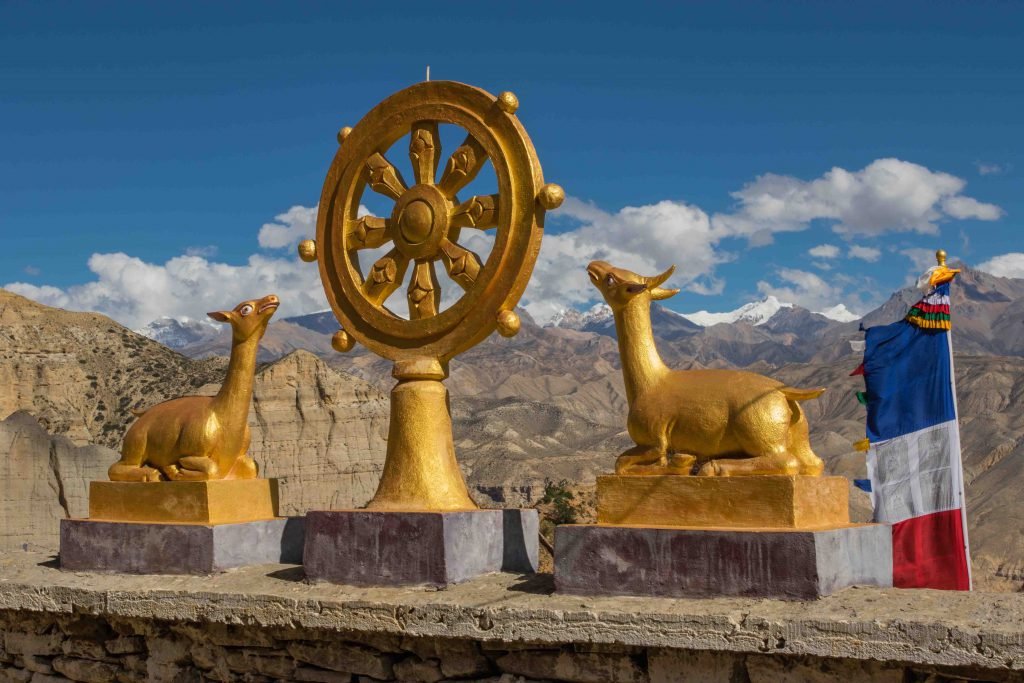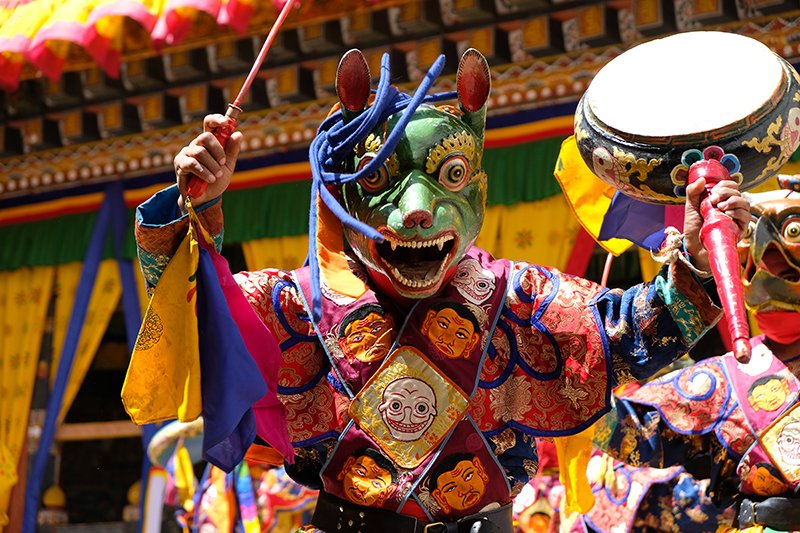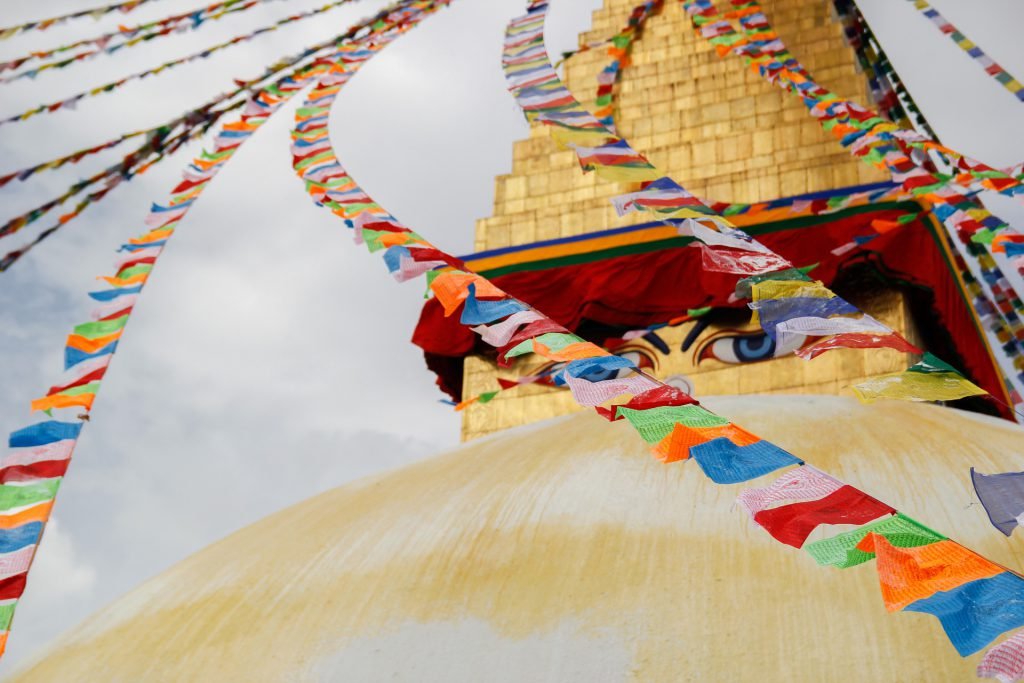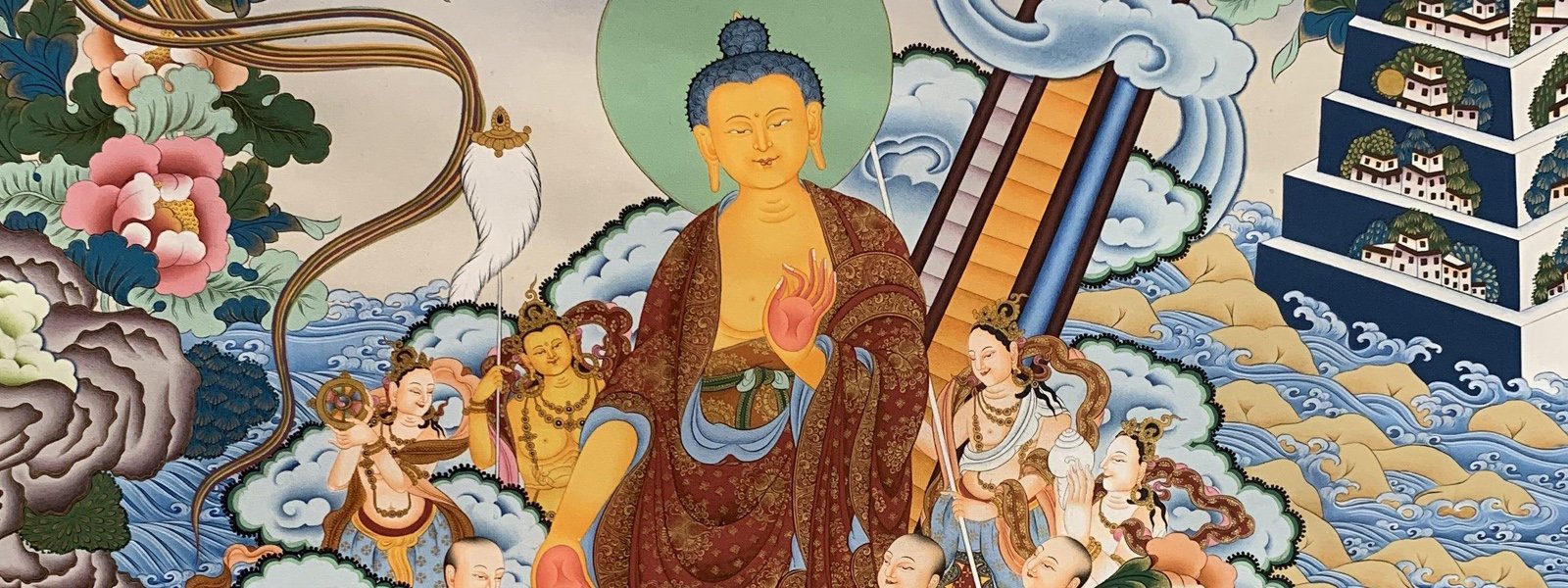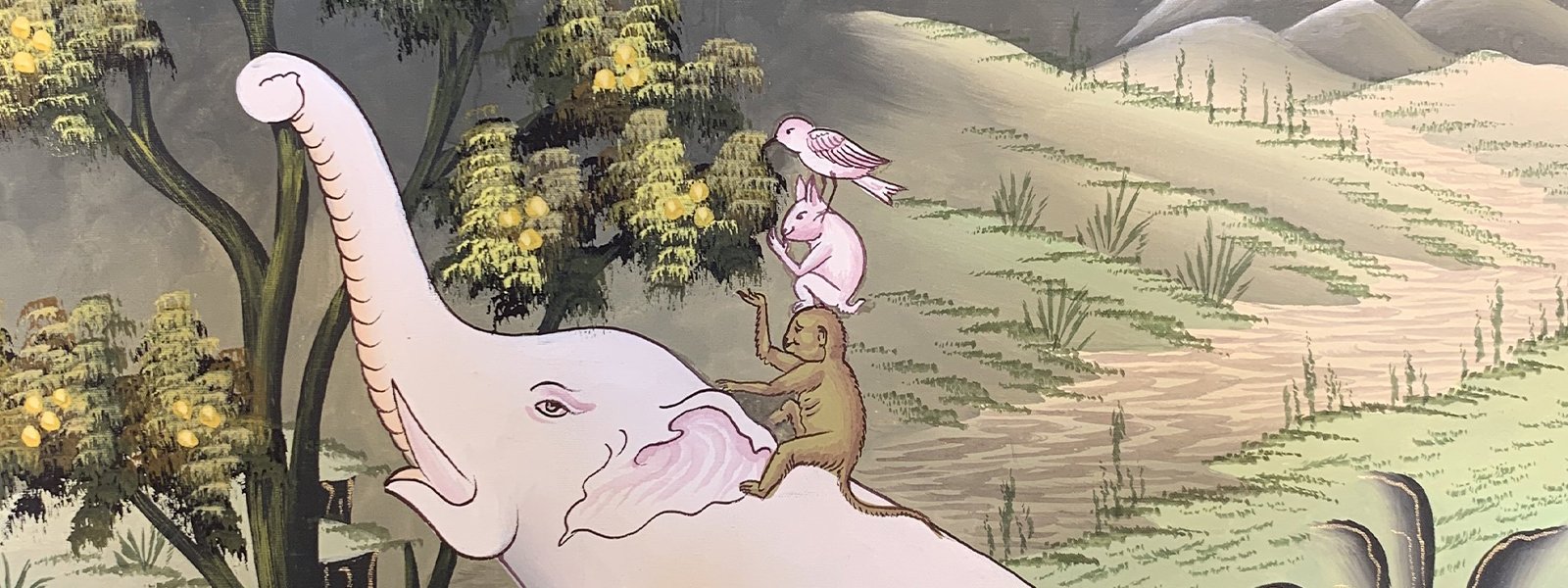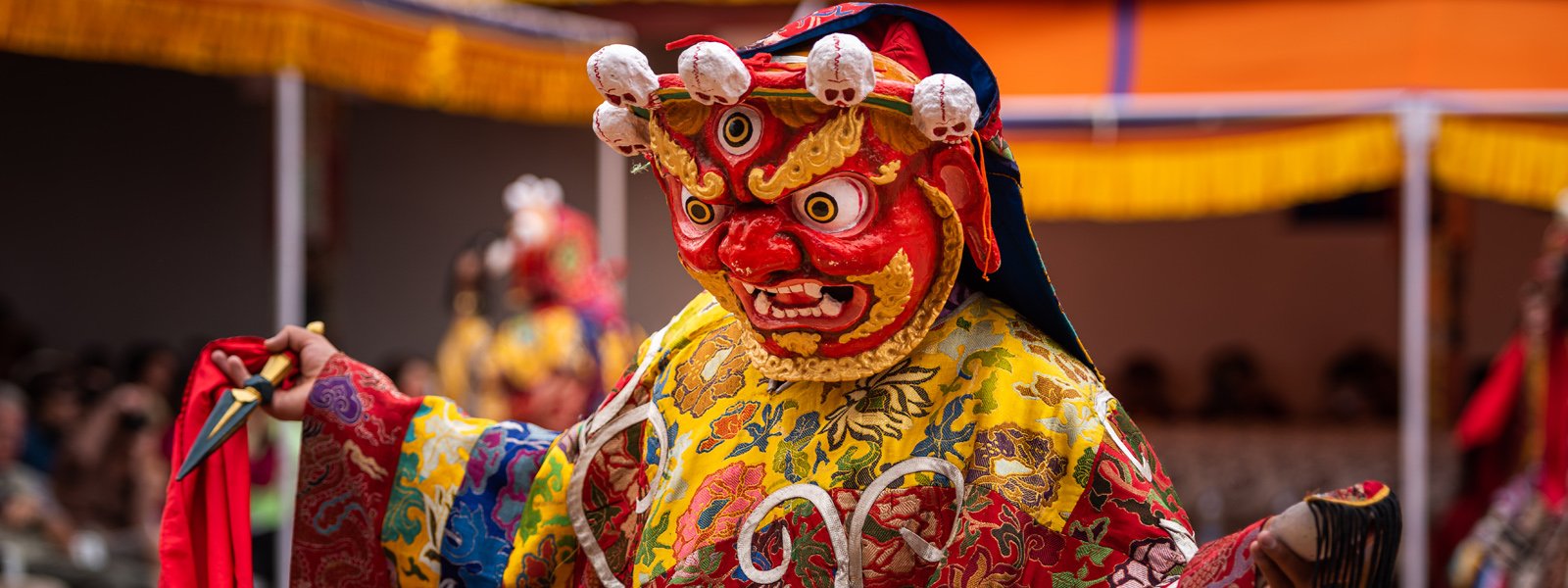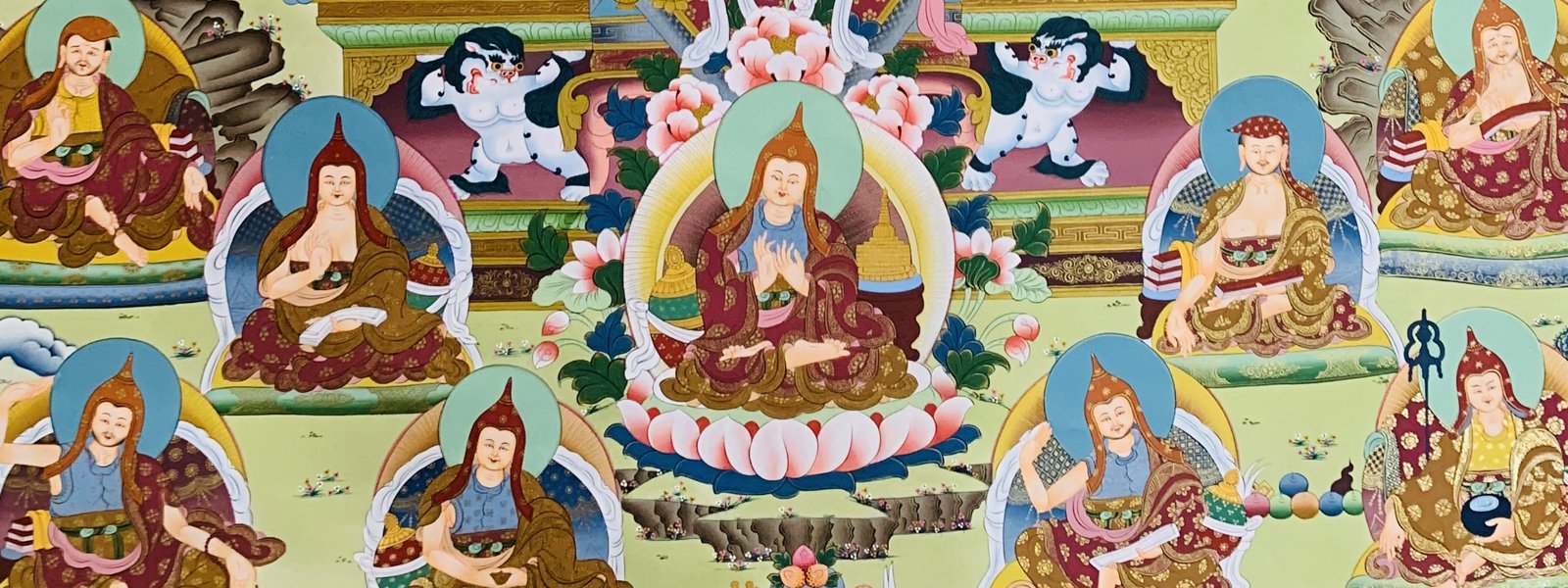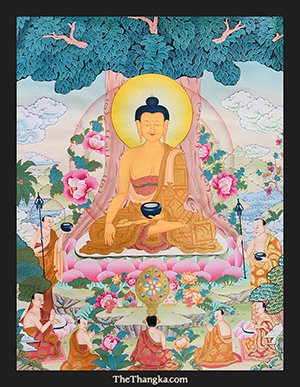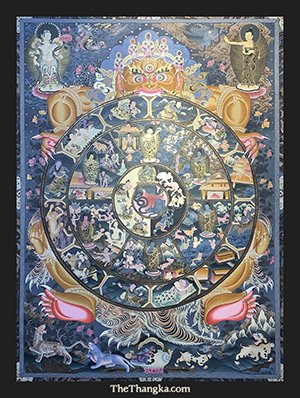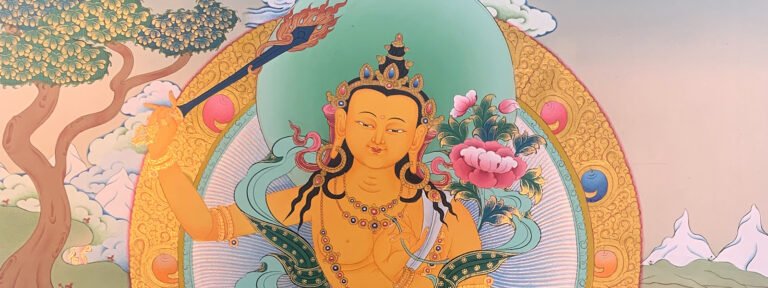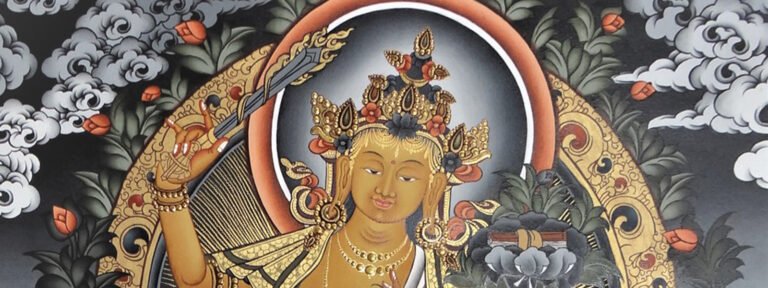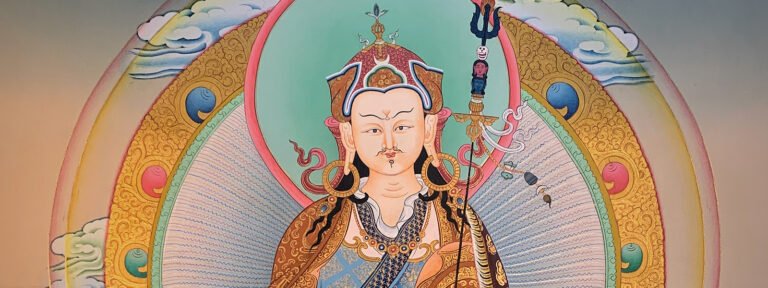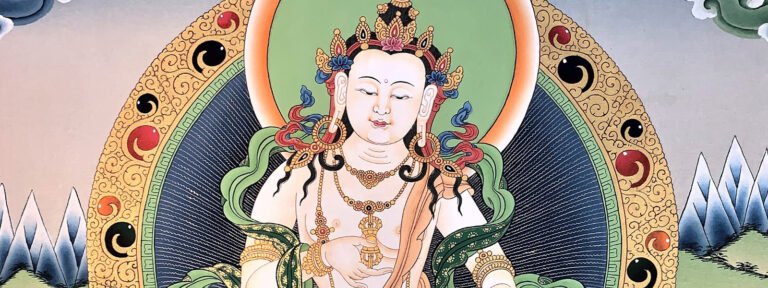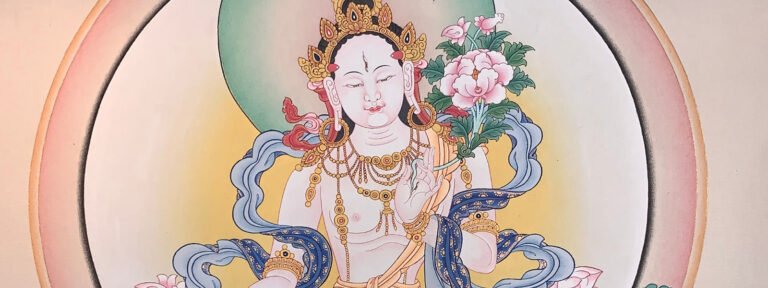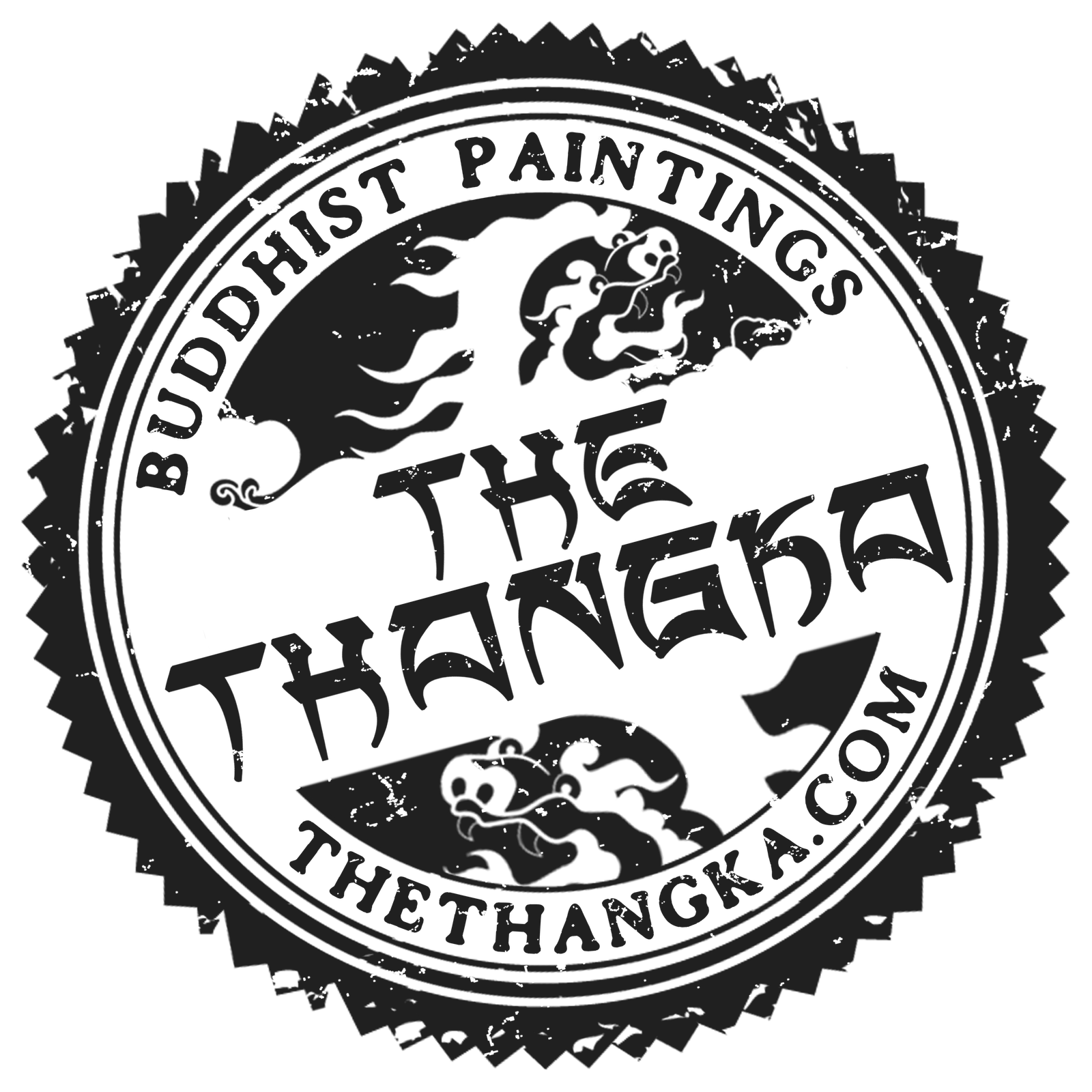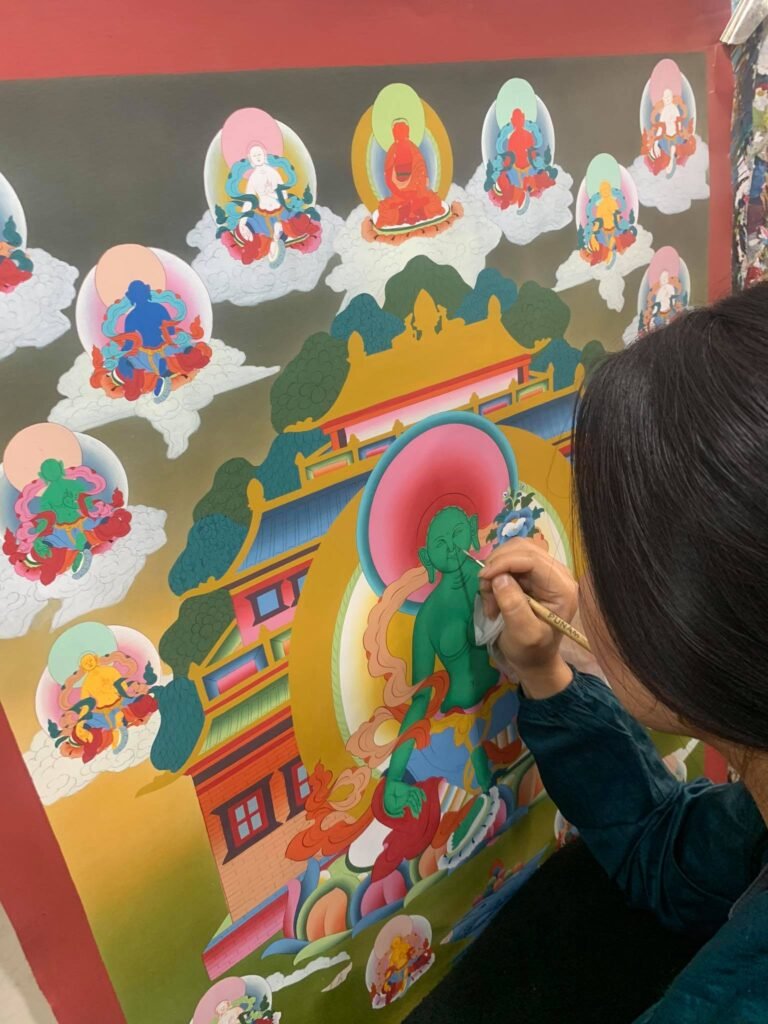Chenrezig is a form of Bodhisattva Avalokitesvara, also known as 4 armed 6 Syllable Avalokitesvara, he embody the compassion of all Buddhas. Chenrezig is the white Buddha form which represents the enlightened mind’s loving kindness and compassion. His name literally means “One who looks with unwavering eye”.
He should be seen as a totally transparent, rainbow-like form, like a reflection in water. He sits on a lotus and the flat disc of the moon, has four arms two of which are joined in the prayer position holding the wish fulfilling gem.
In his left hand he holds a lotus flower and in his right a crystal rosary. He wears the silks and ornaments of a Bodhisattva, representing all his special qualities and a deer skin over his shoulder. His eyes see all beings. The two hands, which are joined at the level of the heart, holding the wish fulfilling jewel of the mind, symbolize the development of the precious enlightened attitude for the benefit of all beings. The second left hand, holds an open lotus flower as a sign that Chenrezig has attained the highest qualities and is free from all kinds of suffering.
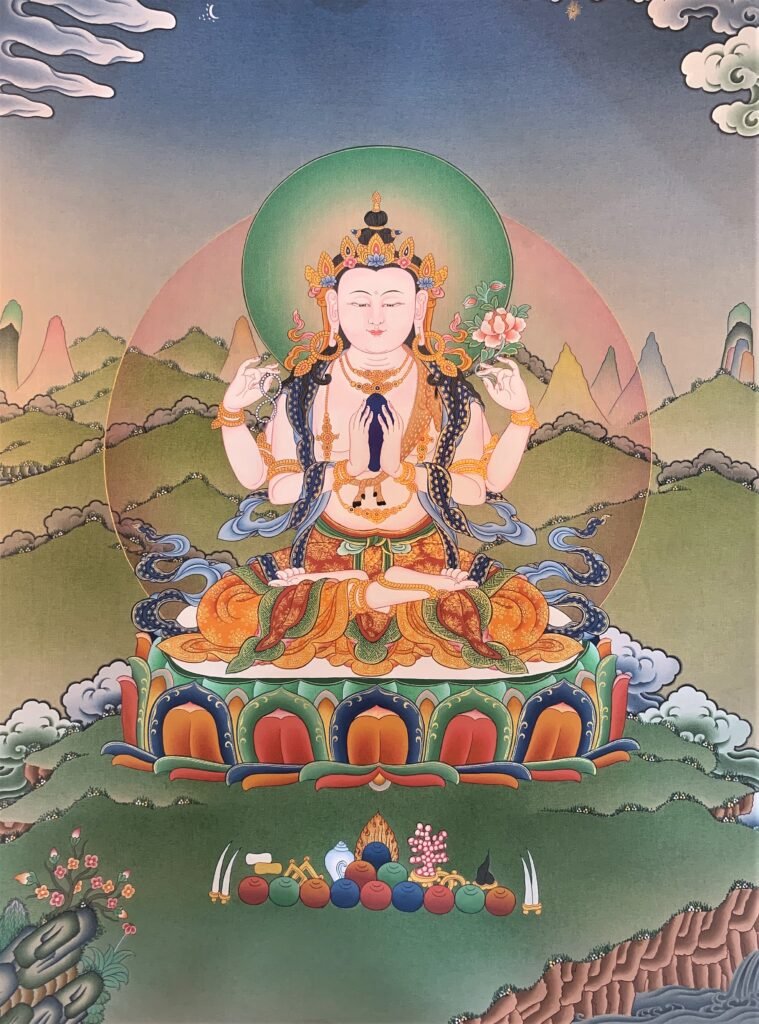
The mala in the second right hand symbolizes the truth of the path and it is believed that reciting his mantra liberates all beings from cyclic existence. The Mantra of Chenrezig is “OM MANI PADME HUM”.
